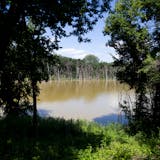No city in the world with a million or more inhabitants sits closer to the North Pole than Helsinki. Its extreme geographical location means that when days are short, they are very short, and when they are long, they are nearly endless.
On luxuriously long summer days, where do Finns go? Often it is Suomenlinna, a beautiful, compact archipelago just over a mile from Helsinki's busy harbor.
Known as "the Gibraltar of the North," Suomenlinna is a fortress-turned-community covering eight footprint-shaped, rocky islands. Fortress walls, bucolic parks and views of the sea make the place, with its warring history, a most peaceful place to relish Finland's capital.
Originally called Sveaborg, the fortress was designed by Swedish master architect Augustin Ehrensvärd, beginning in 1748.
You might ask, "Why did the Swedes build a fortress in Finland?"
For the answer, it's worth walking directly from the ferry pier to the middle of the fortress, past the sights along the way, to the visitor center, to see a film that traces Suomenlinna's history, comprehensible to all through choose-your-language headphones. Without that first step, one could amble around enjoying spectacular views out to sea without really understanding the fascinating and fraught history of the place.
A walk through Baltic history
Complex relationships of three main nationalities -- the Finns, Swedes and Russians -- intertwine here. For most of the fortress' existence, the three players were in a state of antagonism, if not out-and-out war. The periods of the area's history reflect the tension: the Swedish era, the Russian era and the Finnish garrison era.


